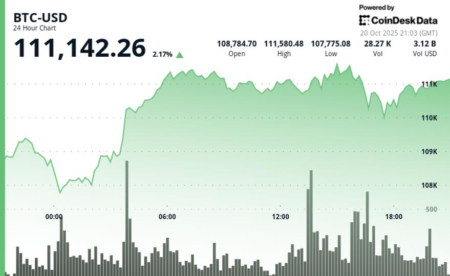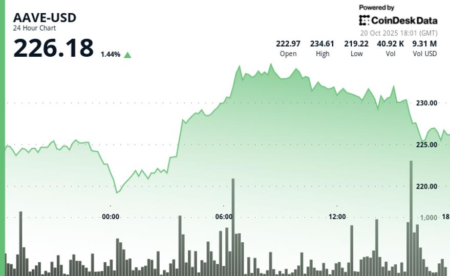Understanding the Complex Landscape of Cryptocurrency Money Laundering
In recent headlines, Roman Storm, the co-founder of the notorious crypto mixer Tornado Cash, received a federal conviction in a New York court for operating an unlicensed money-transmitting business. Law enforcement hailed this conviction as a crucial win against crypto-related money laundering. However, the reality of the fight against illicit funds in cryptocurrency is far more nuanced.
For several years, regulators have designated mixers, like Tornado Cash, as primary money laundering threats. Their nominal anonymity and opacity often make them enticing tools for criminals. While it is easy to perceive these platforms as central to the illicit crypto ecosystem, statistical evidence reveals a contrary reality. In fact, centralized exchanges—not cash mixers—are the primary facilitators of money laundering within the cryptocurrency sector.
Centralized Exchanges: The Real Laundering Hubs
According to a 2025 Chainalysis report, the lion’s share of illicit crypto funds in 2024 was funneled through centralized exchanges. These platforms serve as the decisive junction where criminals convert their dirty cryptocurrency into usable fiat currencies like dollars, euros, or yen. The global reach, liquidity, and speed offered by these exchanges are unmatched, making them the go-to for criminals looking to turn profits from illegal activities into accessible cash.
While mixers can obscure transactions on-chain, it is centralized exchanges that hold the power to transform these obscure assets into currency tied directly to financial institutions. Unfortunately, many of these exchanges employ compliance teams that are either underfunded or inadequately trained. This lack of resources can not only allow but even encourage illicit activities to proliferate unchecked, as criminals can often navigate around these compliance processes.
Systemic Issues in Compliance Mechanisms
High-profile enforcement actions have illuminated the systemic weaknesses present in centralized exchanges. For instance, the U.S. Justice Department’s settlement with Binance highlighted that this leading exchange had processed transactions linked to ransomware, darknet markets, and sanctioned entities. Although Binance ramped up its compliance spending to about $213 million in 2023, similar issues have been observed across various other exchanges.
BitMEX, for instance, faced a staggering $100 million fine for violations of the Bank Secrecy Act, underscoring a broader issue. Focusing regulatory efforts on mixers, while allowing centralized exchanges to operate with a less stringent oversight framework, is akin to securing windows while leaving the front door wide open. This contradiction raises questions about the effectiveness of current anti-money laundering strategies.
The Limitations of KYC Policies
Know Your Customer (KYC) regulations are foundational to compliance in the cryptocurrency world; theoretically, they help to filter out bad actors by verifying identities and tracking suspicious transactions. However, the reality is often starkly different. For many exchanges, KYC has devolved into a checkbox exercise, giving regulators a false sense of security while skilled criminals continue to circumvent these measures.
Weak KYC processes stand as one of the primary challenges. Exchanges sometimes accept poorly vetted identity documents or utilize automated systems prone to manipulation through sophisticated techniques such as deepfakes. Even legitimate users can unwittingly become enablers of money laundering when they leverage mules, straw accounts, or shell companies to navigate initial KYC checks.
Moreover, KYC is not designed to monitor or identify complex laundering patterns that can occur at scale. Criminal schemes can easily fragment transactions across multiple accounts, often leaving no discernible traces by the time the funds reach exchanges prepared to convert them into fiat currency.
Fortifying Centralized Exchanges Against Illicit Activity
Given that centralized exchanges inherently attract money launderers due to their position at the interface of crypto and fiat money, it is imperative that regulatory fixes address underlying structural issues rather than relying solely on traditional compliance mechanisms. Future efforts must focus on creating systems capable of detecting laundering patterns in real time across accounts and jurisdictions.
Investing more resources into compliance teams and improving KYC processes are vital steps for ensuring effective monitoring of transactions. Furthermore, closing legal loopholes that allow exchanges to operate in permissive jurisdictions while still catering to high-risk markets is essential. Additionally, regulators should impose accountability measures on executives for lapses in fraud detection.
The Road Ahead: A Comprehensive Approach
The battle against cryptocurrency money laundering requires holistic changes in how regulation is conceived and implemented, especially concerning centralized exchanges. By prioritizing robust monitoring and information-sharing practices, regulators can create a stricter but fairer environment that curtails money laundering activities.
Ultimately, without significant reform at the structural level for centralized exchanges, enforcement actions against mixers will remain largely symbolic. Billions in illicit crypto funds will continue to elude regulators, opaquely flowing through the very platforms that purport to facilitate legitimate financial activities.
Addressing these challenges with a comprehensive approach is absolutely critical for shaping the future landscape of cryptocurrency trading, ultimately fostering a more secure and compliant ecosystem.

















